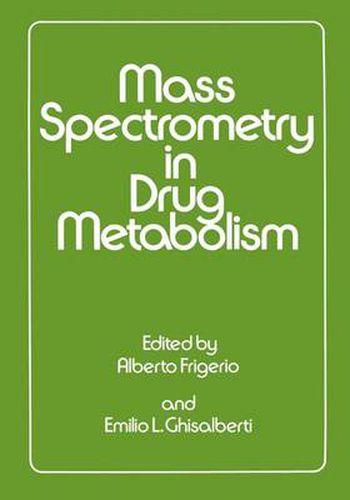Readings Newsletter
Become a Readings Member to make your shopping experience even easier.
Sign in or sign up for free!
You’re not far away from qualifying for FREE standard shipping within Australia
You’ve qualified for FREE standard shipping within Australia
The cart is loading…






This title is printed to order. This book may have been self-published. If so, we cannot guarantee the quality of the content. In the main most books will have gone through the editing process however some may not. We therefore suggest that you be aware of this before ordering this book. If in doubt check either the author or publisher’s details as we are unable to accept any returns unless they are faulty. Please contact us if you have any questions.
When a dose of drug is administered, three main phases of drug action may be distingushed. In the pharmaceutical phase the dosage form disintegrates, the active substance dissolves and becomes available for absorption. The second phase ( pharmaco kinetic phase) includes absorption, distribution, metabolism, and excretion. That fraction of the dose which finally reaches the circulation after absorption will be available for biological action in the third, or pharmacodynamic phase when the drug reaches the target tissues and a drug-receptor interaction takes place. The objectives in studies of drug metabolism are: (a) to identify the pathways by which drugs are transformed in the body; (b) to ascertain quantitatively the importance of each pathway and intermediate; © to identify and quantify endogenous constituents influenced by the drug or its metabolites which may interfere with common metabolic processes. Since metabolites usually differ from their precursors by only a single chemical group, the resulting metabolic pathways generally consist of a series of closely related compounds. Mass spectrometry is uniquely suited for the analysis of drugs and metabolites for several reasons: only a minimal amount of sample preparation is needed, closely related compounds can be analyzed in a single step, structures can often be deduced directly from the mass spectra without the need for pure reference spectra, and constituents can be quantified with relative ease even when present in fractional nanogram quantity.
$9.00 standard shipping within Australia
FREE standard shipping within Australia for orders over $100.00
Express & International shipping calculated at checkout
This title is printed to order. This book may have been self-published. If so, we cannot guarantee the quality of the content. In the main most books will have gone through the editing process however some may not. We therefore suggest that you be aware of this before ordering this book. If in doubt check either the author or publisher’s details as we are unable to accept any returns unless they are faulty. Please contact us if you have any questions.
When a dose of drug is administered, three main phases of drug action may be distingushed. In the pharmaceutical phase the dosage form disintegrates, the active substance dissolves and becomes available for absorption. The second phase ( pharmaco kinetic phase) includes absorption, distribution, metabolism, and excretion. That fraction of the dose which finally reaches the circulation after absorption will be available for biological action in the third, or pharmacodynamic phase when the drug reaches the target tissues and a drug-receptor interaction takes place. The objectives in studies of drug metabolism are: (a) to identify the pathways by which drugs are transformed in the body; (b) to ascertain quantitatively the importance of each pathway and intermediate; © to identify and quantify endogenous constituents influenced by the drug or its metabolites which may interfere with common metabolic processes. Since metabolites usually differ from their precursors by only a single chemical group, the resulting metabolic pathways generally consist of a series of closely related compounds. Mass spectrometry is uniquely suited for the analysis of drugs and metabolites for several reasons: only a minimal amount of sample preparation is needed, closely related compounds can be analyzed in a single step, structures can often be deduced directly from the mass spectra without the need for pure reference spectra, and constituents can be quantified with relative ease even when present in fractional nanogram quantity.